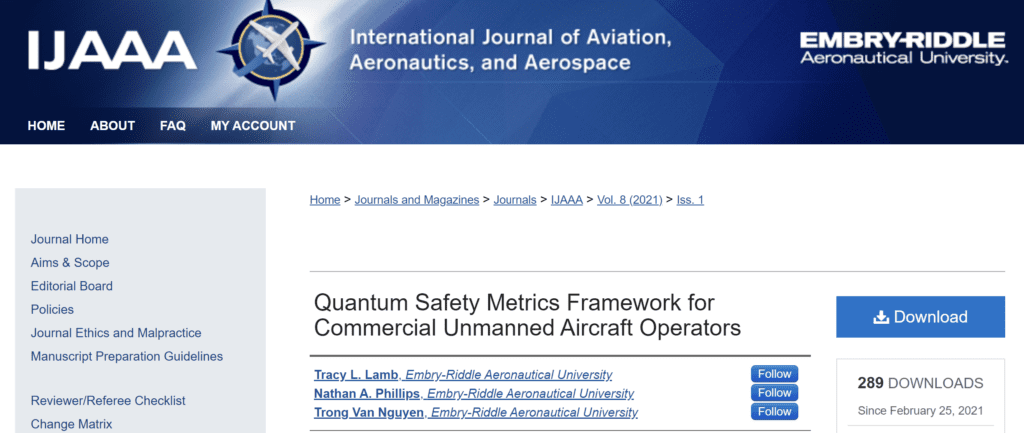Abstract
Commercial unmanned aircraft systems continue to increase in applications and diversity; however, mishaps and accidents erode safety, investment return, and efficiency. Most unmanned aircraft accidents are preceded by leading indicators; the ability to forecast and quantify these may provide increased safety and profitability. This mixed-method research study used a non-experimental parallel convergence approach with multiple instruments, multiple-case study n = 22, and one exemplar case design to develop a quantum safety metric program. This study used a combination of previously validated methods as development instruments, including; the HFACS, STAMP, ‘Sierra Scale,’ and Accident Prevention Effort equations. The study extended the Accident Prevention Effort and Sierra Scale equation to determine quantum safety metrics at the time of an accident, and enable benchmark accident prevention values. This new quantum safety metrics program for small commercial unmanned aircraft operators may be replicated and applied to specific types of operating environments, for predictive and optimal safety performance.
Acknowledgement
The authors acknowledge and thank Dr. Alan Stolzer, Dean of the School of Graduate Studies, Embry-Riddle Aeronautical University for his edits and guidance of this paper.
Lamb, T. L. Phillips, N., Nguyen, T. (2021).
International Journal of Aviation, Aeronautics, and Aerospace, 8(1).

